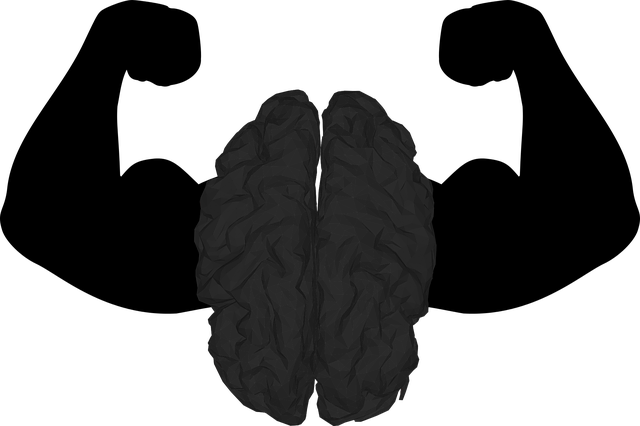Joint pain, a common issue linked to conditions like arthritis and injuries, significantly impacts daily life. Standard therapies include stem cell treatments like Platelet-Rich Plasma (PRP), which utilizes concentrated stem cells from an individual's blood to reduce inflammation and promote healing. Chiropractic care, physical therapy, and anti-inflammatory medications are also effective in managing joint pain. Stem cell therapies, including PRP, offer a revolutionary approach by targeting specific conditions like arthritis, stimulating the body's natural repair mechanisms, and potentially restoring joint health without surgery. Integrating stem cell therapy with physical therapy provides comprehensive relief for knee osteoarthritis, enhancing mobility and reducing symptoms. These advanced regenerative medicine options represent promising game-changers in managing joint pain, addressing both symptoms and underlying causes more effectively than traditional treatments.
In today’s world, understanding and alleviating joint pain is a priority. Joint pain affects millions, impacting mobility and quality of life. This article explores the transformative potential of stem cell therapies in regenerating damaged joints and providing lasting pain reduction. We delve into various treatments, including PRP therapy, physical therapy, and anti-inflammatory options, highlighting their benefits and comparisons. Additionally, we discuss integrating stem cells with chiropractic care for optimal results in managing arthritis and joint-related conditions.
- Understanding Joint Pain and Its Impact
- Exploring Stem Cell Therapies for Joint Regeneration
- Comparison of Different Joint Pain Relief Treatments
- Integrating Stem Cell and Physical Therapy for Optimal Results
Understanding Joint Pain and Its Impact

Joint pain is a common issue that can significantly impact an individual’s quality of life. It encompasses various conditions affecting the joints, such as arthritis, injuries, or wear and tear over time. This discomfort can range from mild irritability to debilitating acute pain, hindering daily activities and mobility. The effects extend beyond physical strain, often leading to reduced mental well-being and limited participation in social and recreational activities.
Stem cell therapies offer a promising approach to addressing joint pain and regeneration. These specialized cells have the remarkable ability to differentiate into various types of joint tissues, including cartilage, bone, and synovial fluid, which are crucial for joint health. Treatments like Platelet-Rich Plasma (PRP) therapy involve injecting concentrated stem cells derived from an individual’s blood into the affected area, promoting healing and reducing inflammation. Additionally, chiropractic care, physical therapy, and anti-inflammatory medications can be part of a comprehensive treatment plan, providing joint pain relief and improving overall mobility.
Exploring Stem Cell Therapies for Joint Regeneration

Stem cell therapies are emerging as a promising avenue for joint regeneration and pain reduction, offering a potential game-changer in the treatment of arthritis and other chronic joint conditions. These innovative treatments focus on harnessing the body’s own repair mechanisms by introducing specialized cells that can differentiate into various types of tissue, including cartilage, bone, and ligament. One prominent approach is Platelet-Rich Plasma (PRP) therapy, where a patient’s blood is processed to concentrate growth factors, which then accelerate healing and regeneration in damaged joints.
In conjunction with physical therapy and chiropractic care, stem cell therapies provide a comprehensive strategy for joint pain relief. PRP therapy, for instance, has shown promising results in treating knee osteoarthritis, allowing patients to experience reduced inflammation and improved mobility. Additionally, regenerative medicine techniques offer a more sustainable solution by stimulating the body’s natural healing process, potentially reducing the need for surgical interventions. This tailored approach addresses not only the symptoms of joint pain but also aims to regenerate and restore the affected joints’ health.
Comparison of Different Joint Pain Relief Treatments

When considering therapies for joint pain relief, it’s essential to understand the diverse range of options available. While physical therapy and chiropractic care have long been established as effective treatments, stem cell therapy for joint pain and PRP (Platelet-Rich Plasma) therapy are emerging as game-changers in regenerative medicine for arthritis. These innovative approaches offer promising results for those seeking joint pain reduction.
Stem cell therapy harnesses the body’s inherent healing capabilities by injecting healthy stem cells into damaged joints, promoting tissue regeneration. On the other hand, PRP therapy utilizes a patient’s own blood to create a concentrated solution of platelets rich in growth factors, which can stimulate the repair process and reduce inflammation. Compared to traditional anti-inflammatory joint treatments, these advanced therapies aim to address the underlying causes rather than merely masking symptoms. Additionally, compared to physical therapy for joint pain, stem cell and PRP treatments offer a more direct approach to healing, making them potentially more effective for severe or chronic conditions.
Integrating Stem Cell and Physical Therapy for Optimal Results

Integrating stem cell therapy with physical therapy offers a holistic approach to achieving optimal results in managing joint pain and promoting regeneration. Stem cell treatments, such as platelet-rich plasma (PRP) therapy, have gained attention for their potential to heal damaged tissues and reduce inflammation. When combined with targeted physical therapy exercises, this dual approach can be particularly effective for patients suffering from arthritis or other chronic joint conditions.
Physical therapists play a crucial role in designing customized exercise programs tailored to each patient’s needs. These exercises focus on improving flexibility, strengthening muscles surrounding the affected joints, and enhancing overall mobility. By combining these therapeutic techniques, healthcare providers can achieve better pain relief, improve joint function, and potentially reduce the need for more invasive procedures or medications. This integrated approach is a game-changer in managing joint pain, offering a natural and regenerative path to recovery.
Stem cell therapy for joint pain and regeneration offers a promising alternative to traditional treatments, with potential benefits including reduced inflammation and enhanced tissue repair. Integrating stem cell therapies like PRP (platelet-rich plasma) with physical therapy can provide even better outcomes for managing arthritis and other chronic joint conditions. While more research is needed, these advanced medical approaches suggest a future where folks experience improved joint pain relief and increased mobility, allowing them to live active, fulfilling lives.
